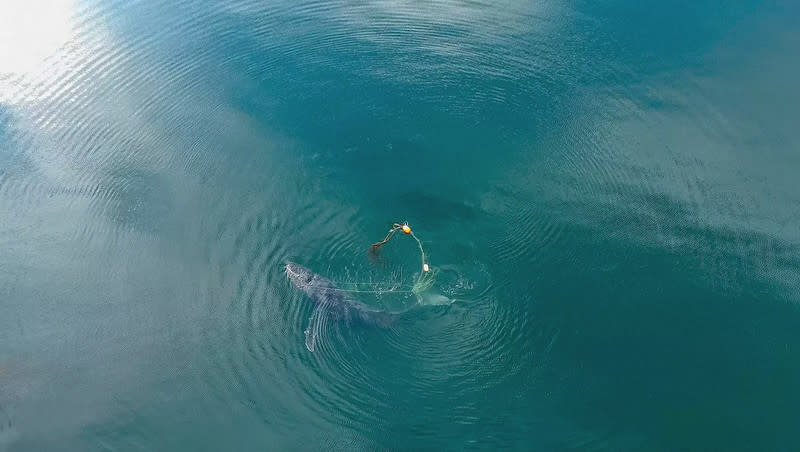Video: Watch as Alaskan whale rescuers save a humpback whale from 300-pound crab pot

Off the coast of Gustavus, Alaska, on Oct. 10, five responders rescued a whale that had gotten stuck in the ropes tied to a 300-pound crab pot, per the Independent.
NPS whale biologist Janet Neilson told NPR, “It was curved into a C-shaped posture. The line was so tight that it couldn’t swim in a straight line.”
She included that the whale had likely been trapped for around three days.
The whale rescue team consisted of a whale disentanglement expert from the Alaska Whale Foundation, Fred Sharpe, NPS whale biologists Janet Neilson and Chris Gabriele, park ranger Bethany Robichaud and wildlife biologist Tania Lewis.
They “worked with the whale all day until daylight was disappearing, using specialized tools to remove more of the gear while remaining at a distance from the whale,” per the Glacier Bay National Park & Preserve.
The NPS said, “If you encounter an entangled whale or other marine mammal, it is important not to try to cut it free, for your own safety and the whale’s safety. Also, it takes specialized tools and training to remove all of the life-threatening gear from a whale. Well-meaning people who cut off buoys trailing behind a whale actually worsen the whale’s chances of survival.”
“Taking just the trailing buoys off while leaving lethal lines or net around the whale’s body make it harder to re-locate the animal and impossible to attach a satellite tag buoy that responders use to track the whale while they plan their rescue efforts,” they continued.

